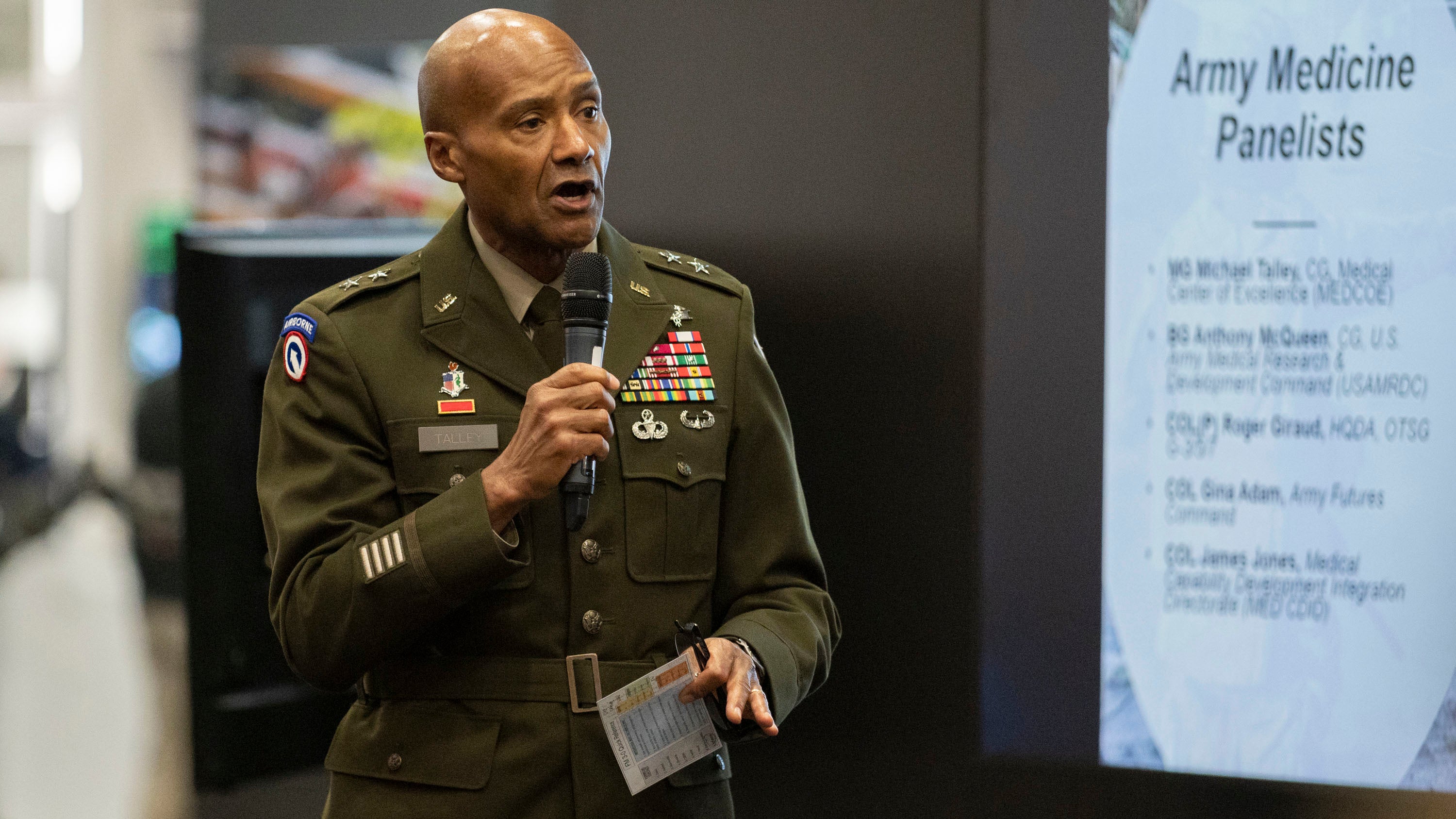Future Fight Poses Big Challenges for Army Medicine
Future Fight Poses Big Challenges for Army Medicine

The Army has a lot to learn and a lot to develop to prepare for large-scale, high-casualty and remote wars.
In an Oct. 11 Warriors Corner discussion at the Association of the U.S. Army’s 2022 Annual Meeting and Exposition, medical leaders said they are sharply focused on caring for future casualties on distant battlefields from which quick evacuation isn’t possible.
Maj. Gen. Michael Talley, commanding general of the Army’s Medical Center of Excellence at Joint Base San Antonio-Fort Sam Houston, said there could be thousands of casualties who will need to be treated where they are until evacuation is possible. Medical staffs may be limited, so combat medics will be asked to do more, and both telemedicine and even remote surgery may be needed to keep patients alive until they can be evacuated.
Army health officials hope they have 10 to 20 years to refine their combat medical needs, such as better communications and data transfer, and new and better ways to conduct prolonged field care. Research is also underway for automated evacuation alternatives.
Some challenges are big, Talley said. “We cannot get a surgeon to every place where there is an injury,” he said. More dispersed forces and more contested logistics lines are among the problems to overcome.
Research also is looking at ways to know more about the physical and mental conditions of soldiers while they are deployed. Sensors could also provide updates on the status of medical supply stocks, possibly by even tracking items as they are used for treatment.
— Rick Maze

